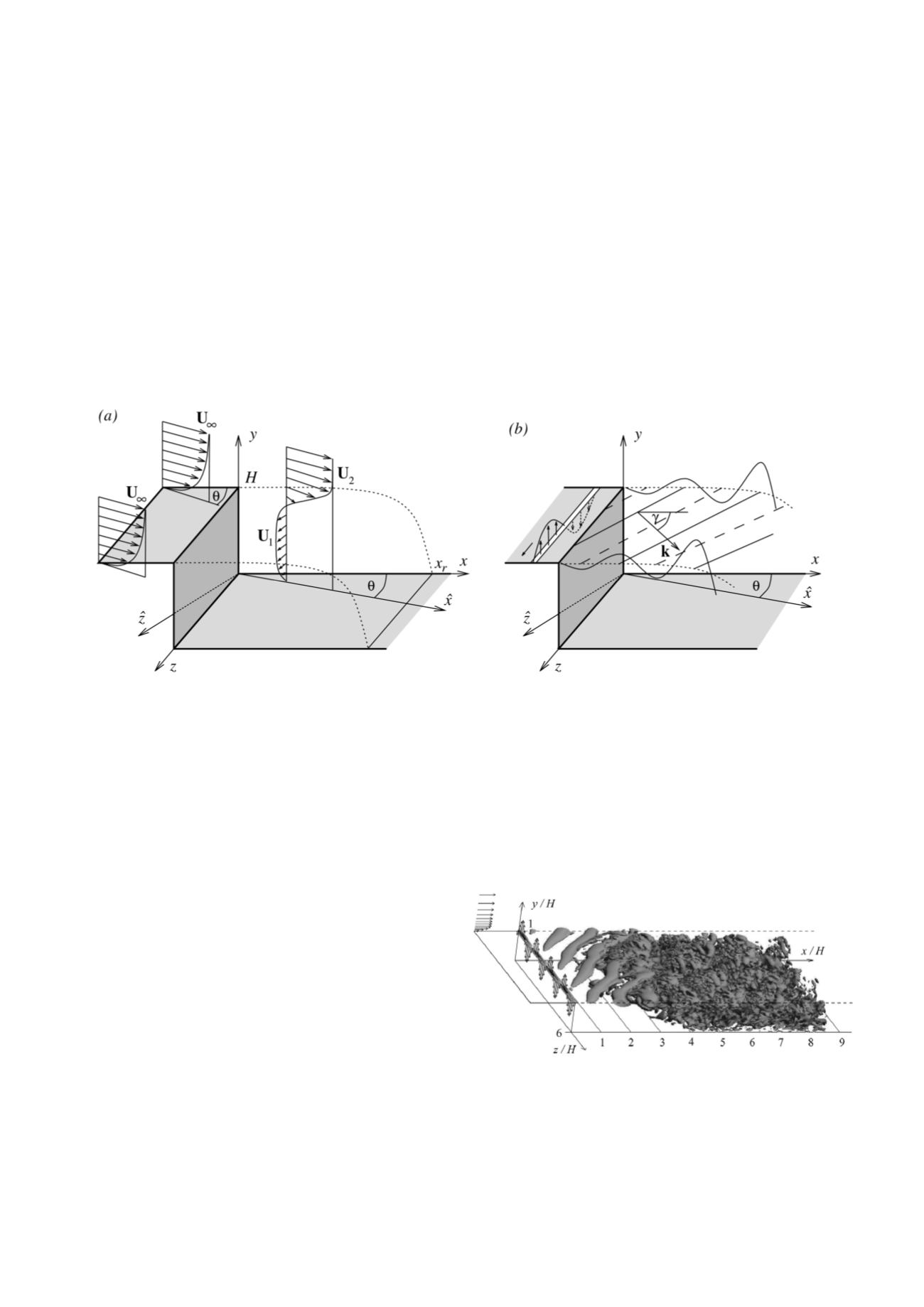

166
Flow Control and Aeroacoustics
Numerical and experimental study of flow and sound fields and their control
n
The focus of the research group in 2017 was the development, testing and usage of research
tools for the numerical prediction of flow and sound fields and the improvement of model-scale
experiments in wind tunnels.
Our research dealt with topics in three focus areas,
including the numerical and experimental modeling of
the wake evolution of wind turbines, the numerical and
experimental modeling of self-noise from splitter attenu-
ators and generic flow control studies. An achievement
was the successful application for substantial computer
resources for large-scale computations to be carried out
with the LRZ facilities for high-performance computation
on massively parallel computer systems. They form the
basis for the ongoing investigations.
Control of a Three-dimensional Shear Layer by Oblique Vortices
An established open-loop flow control method for the
mitigation of flow separation is oscillatory blowing and
suction through holes or slots in the vicinity of the sepa-
ration location on a body immersed in a flow. The artificial
insertion of steady or propagating vortices enhances the
momentum transfer across the shear layer. In order to
better understand the role of forcing parameters numerical
investigations have been carried out by means of large-
eddy simulation for the generic configuration shown in
Fig. 1. It consists of a turbulent boundary layer approach-
ing a swept backward-facing step geometry. Vortices
are generated by wall-normal blowing and suction along
the step edge in terms of a wave propagating along the
z-axis.
Using a suitable choice of the forcing parameters angular
frequency and wave-length along the z-axis oblique
vortices are generated that are primarily advected by the
mean flow in the shear layer as shown in Fig. 2. Their
mixing capability depends on their strength (related to the
forcing amplitude), their spacing and their orientation. For
the generic configuration a maximum efficiency in terms
of shortening of the reattachment length was observed for
a train of vortices with their axes deviating by an angle of
50
o
from the direction of the step edge. The achievement
was similar for both the planar case with the mean flow
normal to the step and for an inflow profile oriented in an
angle of 40
o
towards the step.
Figure 2: Isosurfaces of the second invariant of the velocity gradient tensor
for turbulent flow across a backward-facing step subject to harmonic
forcing by means of a wave propagating along the step edge.
Figure 1: Generic geometry for the investigation of open-loop flow control by oscillatory blowing and suction along a strip aligned with the step edge.



















